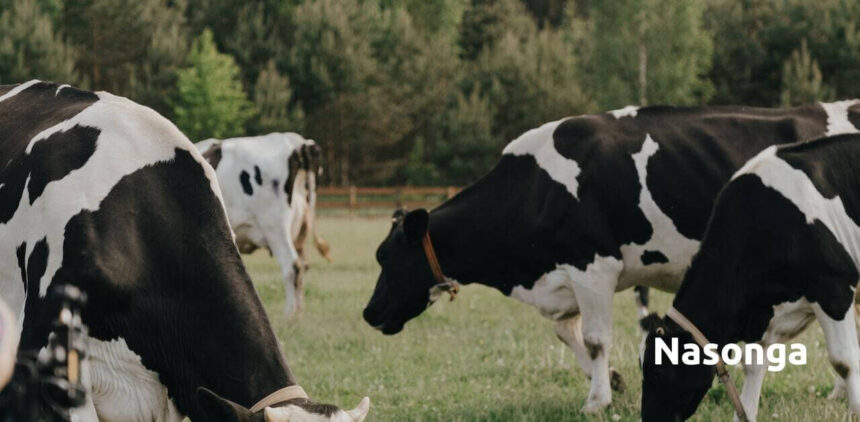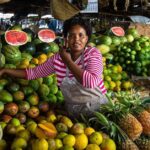Access to financial resources is essential for the growth and success of farmers in the dairy and livestock industry. Conscious of this need, KCB Bank offers Dairy/ Livestock Loans to cater to the unique requirements of farmers and businesses in this sector.
The loans provide various features and benefits, empowering farmers and stakeholders in the dairy/ livestock industry to invest in their operations, enhance productivity, and seize growth opportunities.
In this article, I’ll guide you through Dairy/ livestock loans, their features, and how you can apply and get your loan disbursed.
Overview of the Dairy/ Livestock industry in Kenya
Kenya’s dairy and livestock industry is significant to the country’s economy and agricultural sector. Moreso, it’s popular amongst many rural communities, especially the Maasai, Somali, Kalenjin, and Pokots.
Agriculture is the backbone of Kenya’s economy, pumping about Kes 2713 billion, according to a 2021 Statista report. The dairy and livestock sector contributes significantly to food security, employment generation, and export earnings.
Thanks to increased demand for milk and meat products, Kenya’s dairy and livestock sector is steadily growing. The growing population, urbanisation, and rising disposable incomes have contributed to this demand. Additionally, the dairy industry has benefited from various government interventions.
Need for Financial Support in the Form of Loans
Despite the growth and potential of Kenya’s dairy and livestock industry, farmers face financial challenges that hinder their productivity. The primary barrier is limited access to capital. They don’t have access to funds to help them invest in modern equipment, purchase high-quality livestock breeds, and expand their operations.
This is where the need for financial support in the form of loans becomes crucial. With dairy and livestock loans, farmers have the capital to meet their financial requirements and overcome barriers to growth.
Overview of KCB Dairy/ Livestock Loans
KCB (Kenya Commercial Bank) is one of the leading financial institutions in Kenya that offers a range of financial products and services, including dairy/ livestock loans. These loans are specifically designed to cater to the needs of farmers and businesses operating in the dairy and livestock industry.
Categories of KCB Dairy/ Livestock Loans
KCB Bank categorises Dairy/ Livestock loans into two:
A. Dairy Loans
The Dairy loan category targets the producers of dairy products. It provides them with finances for working capital and herd improvement. The dairy loan has two sub-categories;
No. 1: Dairy Herd Improvement loan
Dairy herd improvement loan aims to enhance returns for dairy producers by providing funds to purchase superior breeds of dairy cows. Here are the benefits of a Dairy Herd improvement loan:
- The loan repayment period is up to 24 months (2 years).
- The loan amount is between Kes 50,000 to 2 million.
- You use the animals as security.
No. 2: Dairy Installment Loans
The dairy instalLment loan targets individuals within the Dairy value chain. It helps them with the working capital to boost their dairy business. Some ideal candidates for daily instalment loans include dairy farmers, milk vendors, dairy bulkers, milk product transporters, etc.
Here are the benefits of Dairy Installment Loans:
- It’s available to new and existing KCB customers (Must engage in dairy production).
- The loan repayment duration is up to 36 months.
- The minimum loan amount is Kes 50000
For you to be eligible for the dairy loan, you must meet the eligibility criteria that require you:
- Must be an active dairy farmer for 1+ years.
- Must be an existing KCB account holder.
- Demonstrate ability to service the loan.
Dairy loan rates and fees include an interest rate of 9% (CBR) and an additional bank margin of 4%. In addition, you may be charged a 3% negotiation charge.
B. Livestock Loans
The livestock loan caters to individuals who produce and trade livestock. Applicants must, therefore, have large herds of cattle and be business oriented.
The benefits of the Livestock loan category include the following:
- Large maximum loan limit of up to Kes 250M.
- Applicants who specialise in trading and transporting livestock can access loans for a maximum of 3 months.
- Customers specialising in animal fattening, egg production, and breeding projects receive the loan for a maximum of 6 months.
- Applicants with pasture production initiatives, such as leasing land, fencing, seeds, etc., and infrastructure development, receive the loans for 12 months.
- KCB bank commits to providing up to 80% while the applicant provides 20% of the total loan requirement.
The bank requires that you meet the following requirements before applying. You must:
- Have an active KCB account and have remitted agricultural proceeds for at least six months.
- Be in the commercial farming market for 1+ years. Relevant documents must support this claim.
- If multi-banked, customers must show evidence of farm sale proceeds channelled through the accounts for the last 12 months. The accounts must reflect at least three payments of the same magnitude as the loan within the period.
- Bank also insists that the applicant channels at least 75% of their business income within the KCB account within the next three months.
Livestock loan has an interest rate of 13% (CBR 9% + Bank margin 4%). Any negotiations with the bank attract a fee of 3%.
While there are several loan categories, each caters for a specific target market. Consequently, each offers loan amounts, repayment terms, and collateral options personalised for that category.
Applying for a KCB Dairy/Livestock Loan
I have written a comprehensive guide on the KCB Bank loan application process, which I recommend you check. However, I’ll share an overview of the Dairy/ Livestock loan application process in this article.
The application process involves seven steps:
- Determine your financing needs: Assess why you need financial help and determine your exact amount. Also, identify and plan specifically how you will utilise the loan amount (if approved)
- Research and gather the documents: Prepare the required documents for the loan application. They include financial statements, collateral documentation, registration documents, etc.
- Visit the Bank: With the needed documentation, visit the branch closest to you for guidance on the loan application.
- Fill out the loan application form: The bank agent handling your case often offers you an application form. This form captures your personal information, business, and asking loan amount. Once done, submit the forms and all the supporting documents.
- Evaluating the loan application: The bank considers your application and evaluates it for creditworthiness, financial stability and other factors. In addition, they may send a field agent to authenticate your livestock and farming ventures.
- Loan approval and disbursement: If your application is approved, the KCB Bank invites you to a loan offer. The offer indicates the amount, fees, interest rate, repayment schedule, etc. Once you accept the terms, the bank disburses the money within the next several hours, usually 24 hours.
- Loan Management and Repayment: The last step is the applicant utilising the loan and keeping track of the repayment dates.
You can get more information about the application form by filling out the contact form on the KCB Bank website. You can visit the closest bank branch for more guidance.
Conclusion
Dairy/ livestock loans are crucial in supporting the growth and sustainability of the dairy and livestock industry. They provide farmers with financial resources to invest in their operations, improve productivity, and seize market opportunities. In addition, farmers can purchase high-quality livestock, modern equipment, and expand their farms, leading to increased production and profitability.
Another type of KCB loan that can help you boost your agribusiness is Boresha Biashara Loan. Check out our guide to learn more about how the loan differs from the dairy/ livestock loan.
Otherwise, I’d love your thoughts on KCB Bank dairy/ livestock loans. Share them in the section below.







